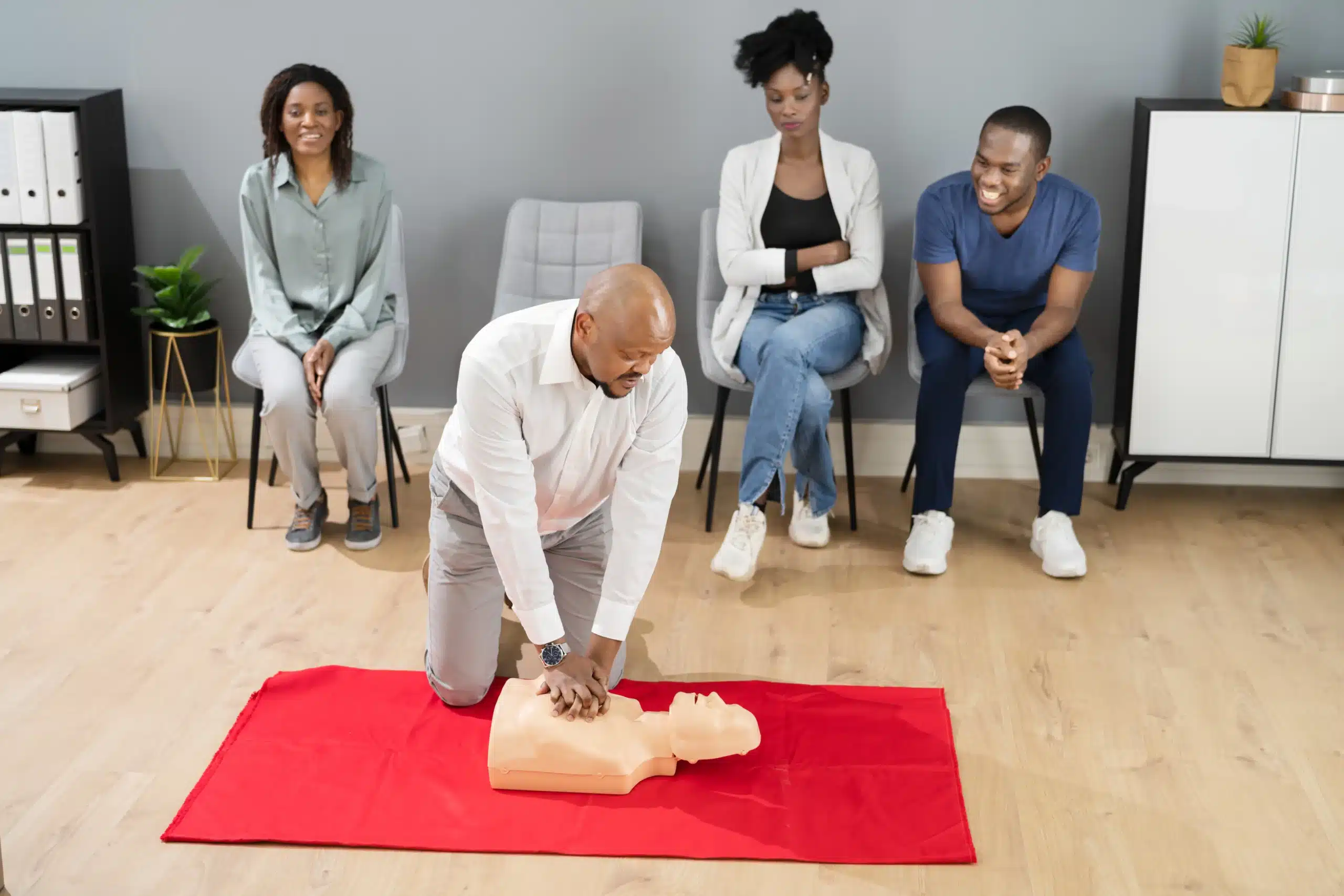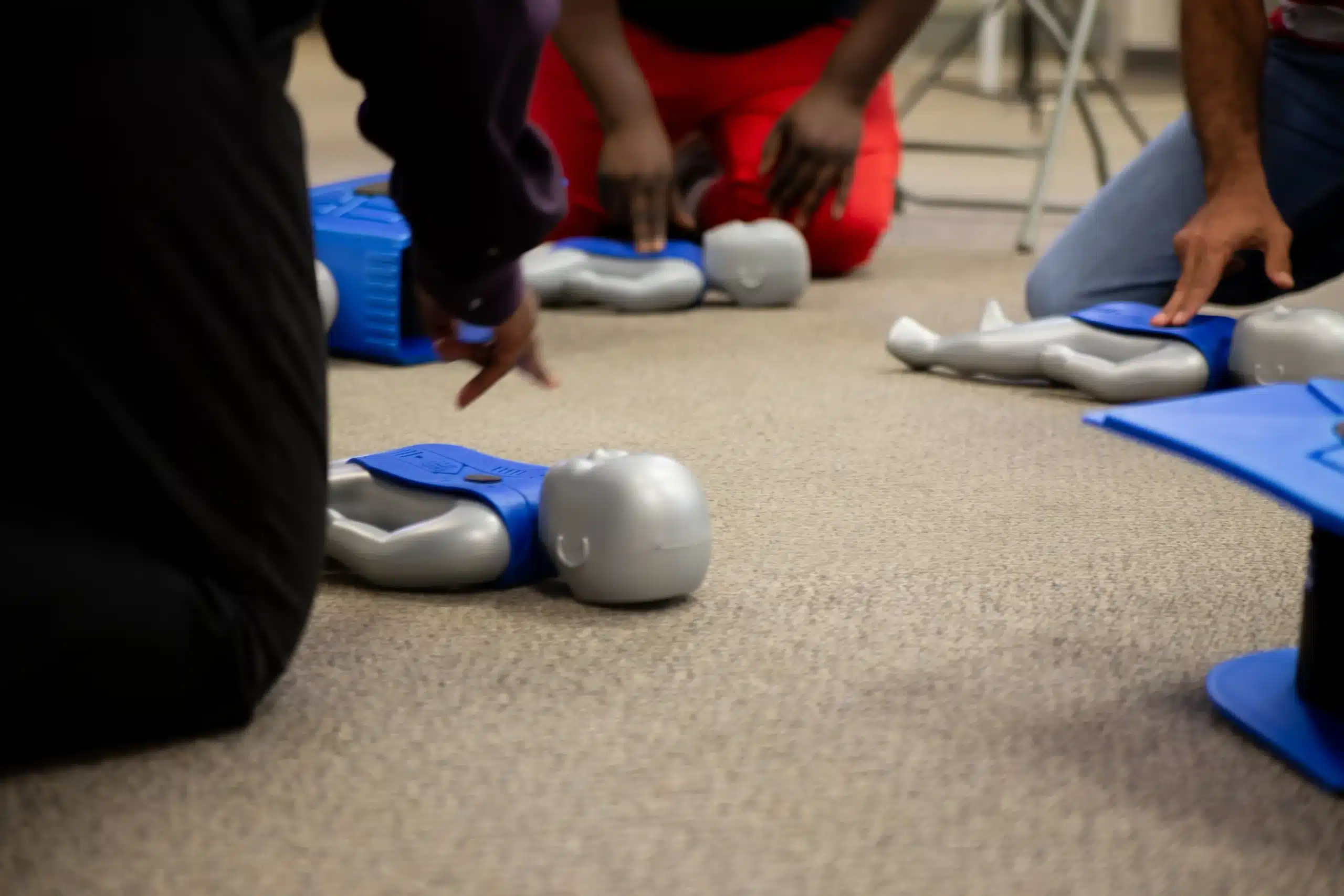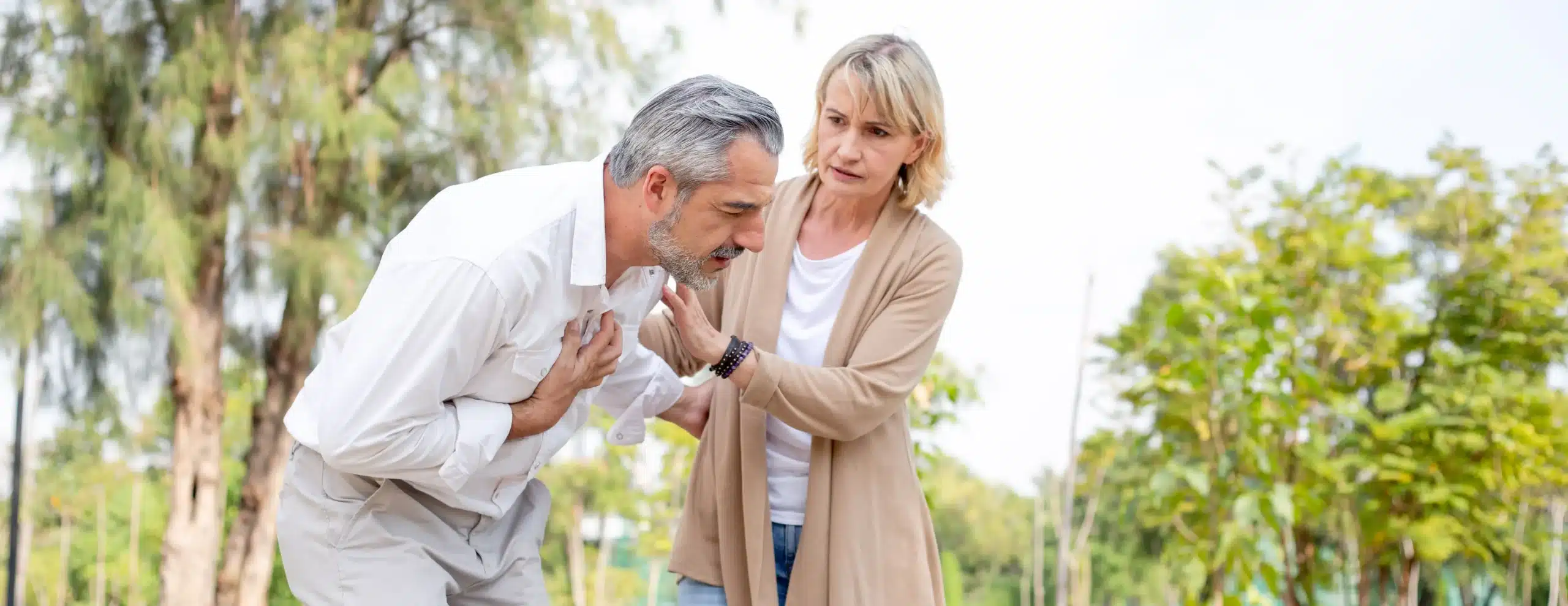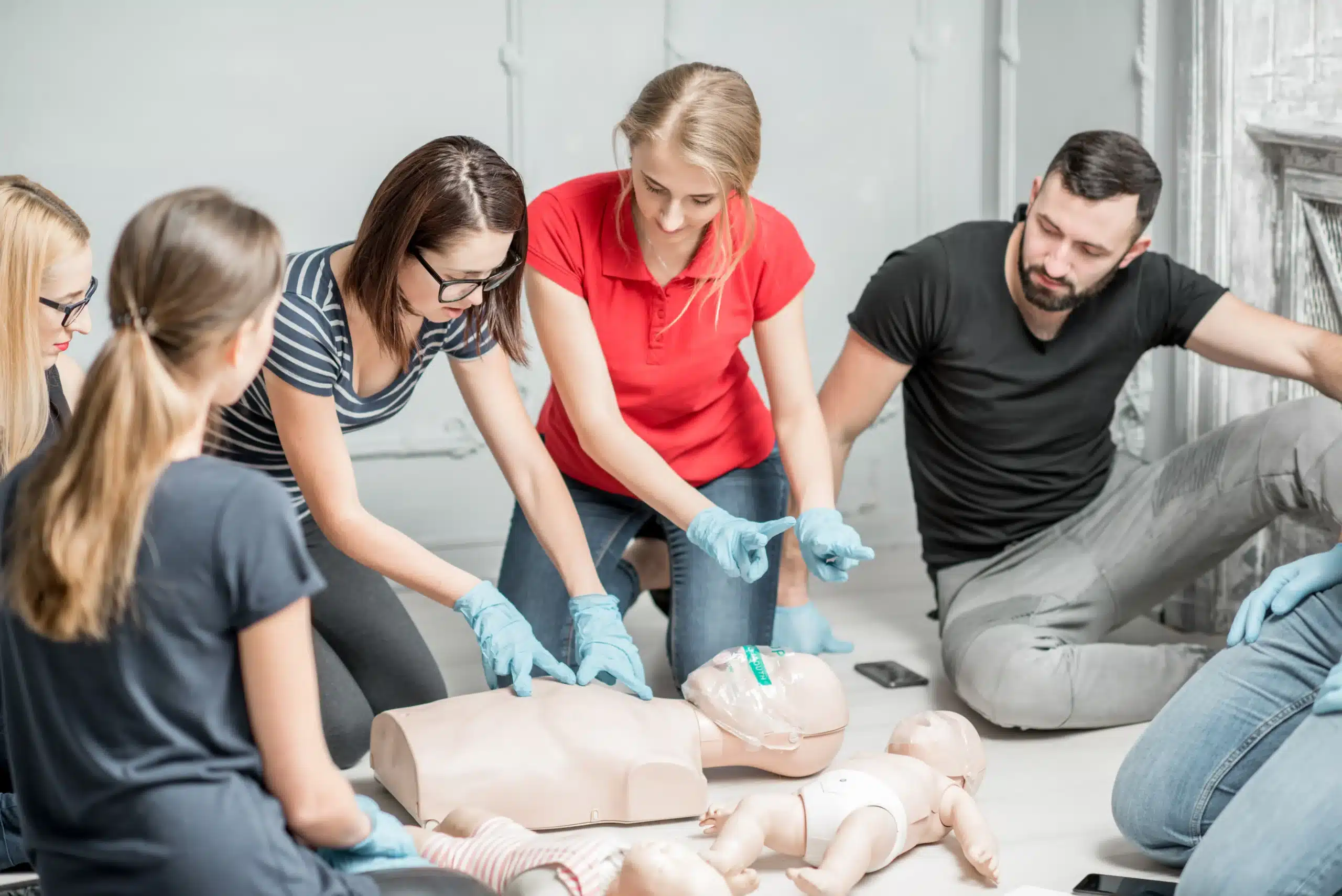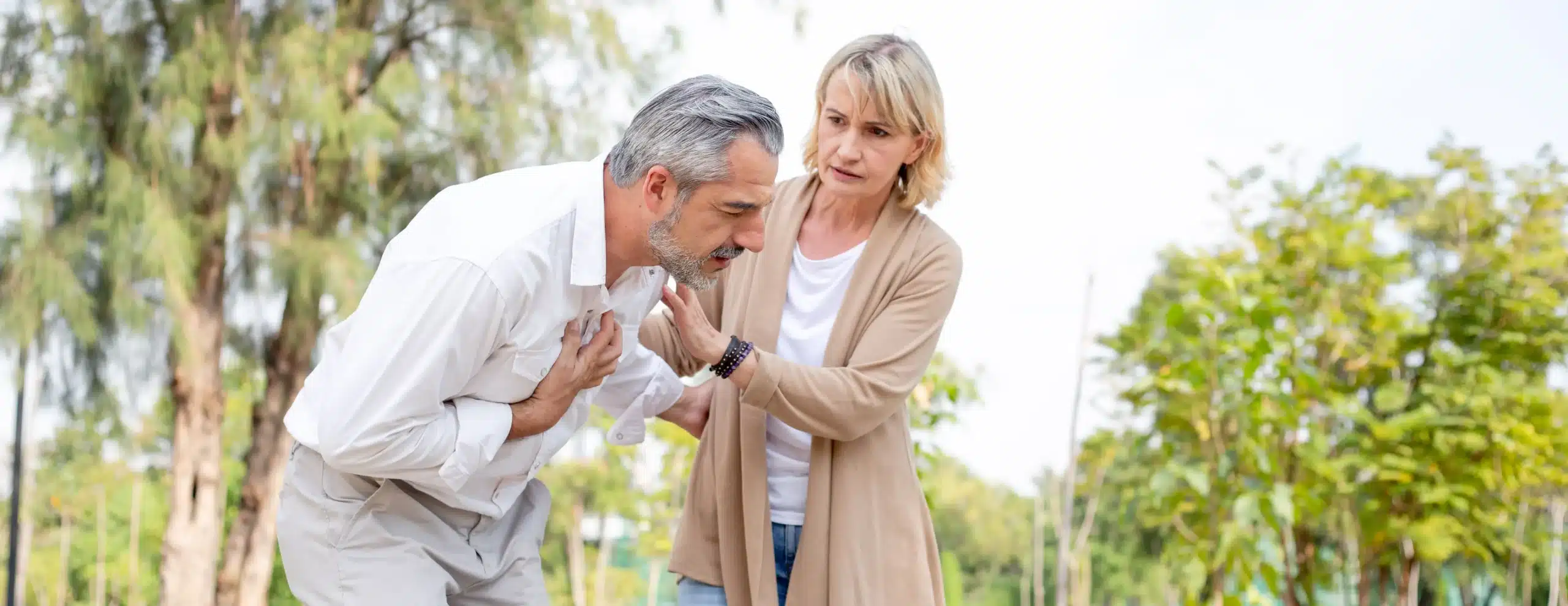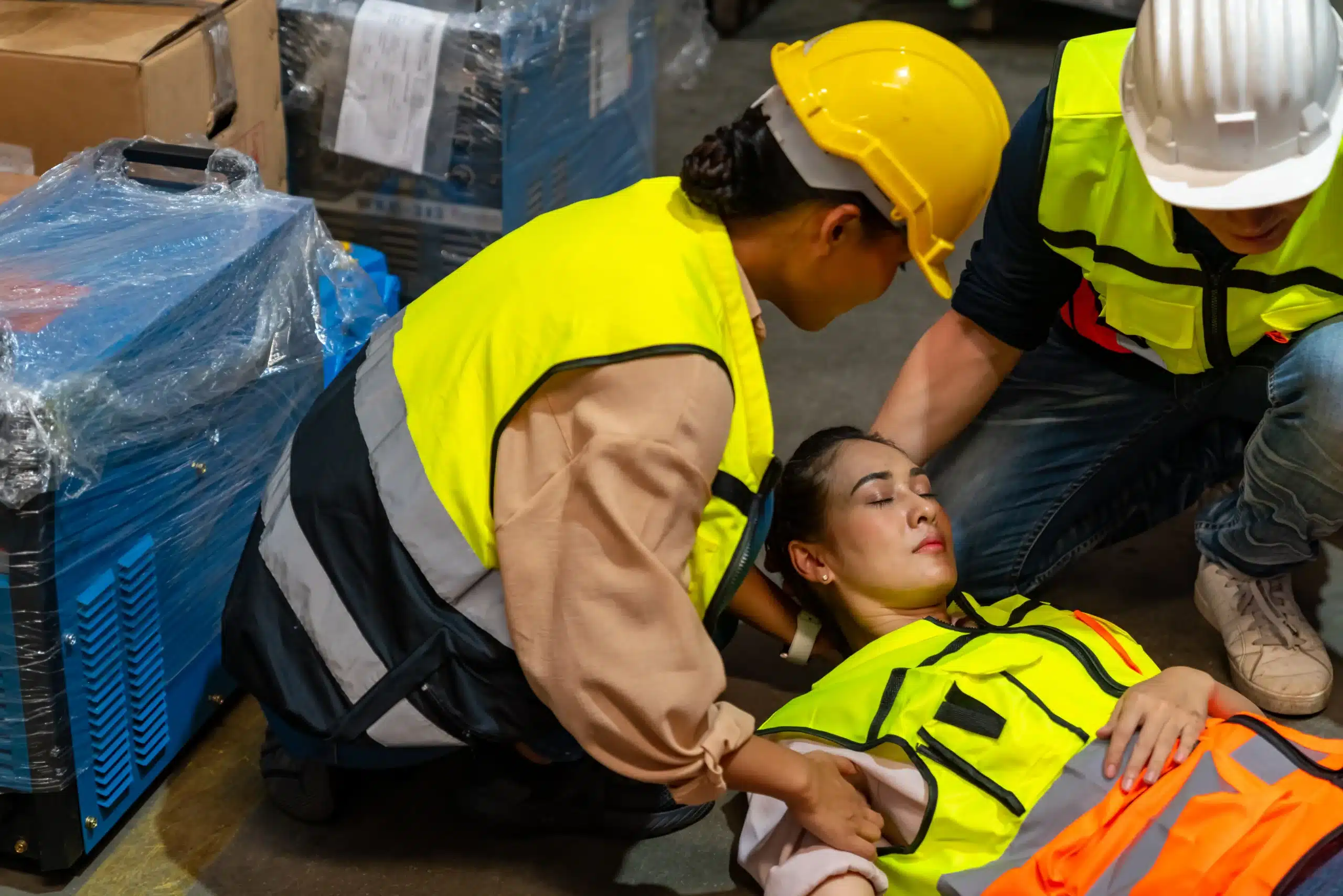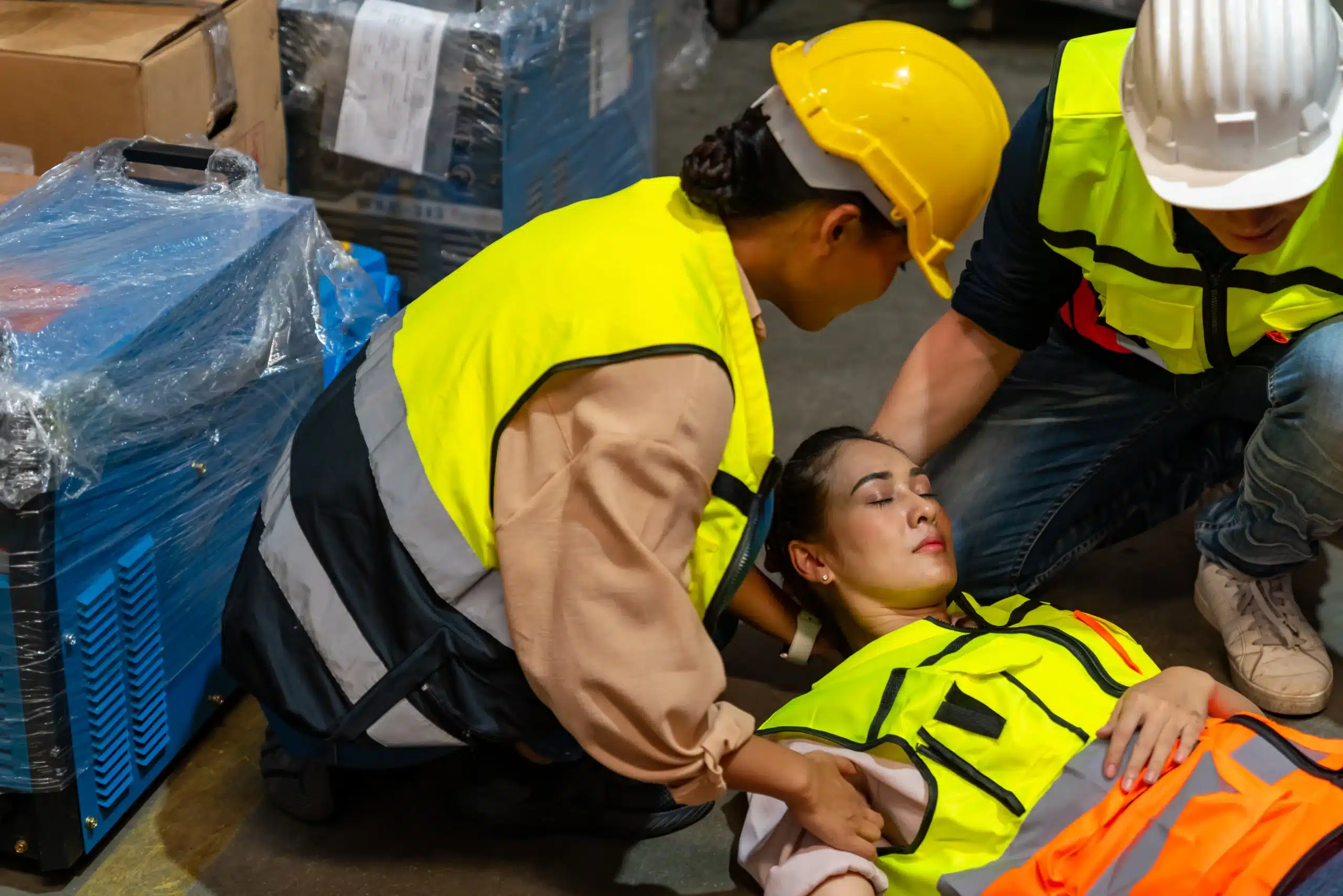In an emergency, seconds can matter. CPR certification equips you with the skills to respond effectively and potentially save a life. This guide simplifies the process of finding the right “CPR certification near me,” covering everything from understanding different course types and leading providers to managing costs and renewals. Whether you’re a healthcare worker seeking BLS or ACLS certification, a parent wanting to be prepared, or simply someone interested in learning this vital skill, we’ll help you navigate the options and find the perfect course. We’ll also explore the differences between in-person training, online courses, and blended learning, so you can choose the format that best suits your needs.
Key Takeaways
- CPR certification equips you to make a difference: Learning CPR and getting certified gives you the skills and confidence to respond effectively in emergencies, potentially saving a life. Explore different learning formats—in-person, online, or blended—to find the best fit for your schedule and learning style.
- Select the right CPR course: Consider your professional requirements, desired certification level (like BLS or ACLS), and learning preferences when choosing a course. Look for training from reputable providers such as the American Heart Association, the American Red Cross, or trusted local providers like Berkeley CPR Classes.
- Stay current with CPR skills and knowledge: CPR guidelines and techniques can change, so maintaining your skills is crucial. Renew your certification promptly and explore continuing education options to stay up-to-date and confident in your ability to provide effective assistance.
What is CPR Certification?
CPR certification means you’ve successfully completed a recognized course and shown you have the skills and knowledge to perform CPR effectively. These courses cover essential life-saving techniques, including chest compressions and rescue breaths, to help someone whose heart or breathing has stopped. A valid CPR certification gives you the confidence to respond effectively in such critical situations.
What is CPR and Why is it Important?
CPR (Cardiopulmonary Resuscitation) combines chest compressions and rescue breaths. These techniques maintain blood circulation and oxygen flow to the brain and vital organs when someone’s heart or breathing has stopped. Learning CPR empowers you to provide immediate assistance in emergencies, potentially bridging the gap until professional medical help arrives. This fast action can significantly improve the chances of survival and minimize the risk of long-term complications. CPR training equips you with the skills to assess the situation, perform chest compressions, deliver rescue breaths, and handle other crucial first-aid procedures.
Who Needs CPR Certification?
While you don’t always legally need CPR certification to administer CPR, formal training ensures you have the skills to perform it correctly and confidently. Many professions require CPR certification, including healthcare providers, childcare workers, lifeguards, and those in public safety roles. However, anyone can benefit from learning CPR. Whether you’re a parent, teacher, coach, or simply want to be prepared for emergencies, CPR certification can make a real difference. Even if you don’t need certification for your job, taking a CPR course is a valuable investment in your ability to help others. It’s a skill that empowers you to act quickly and effectively in a crisis.
CPR Certification Courses
Choosing the right CPR certification course depends on your learning style, schedule, and specific requirements. Let’s explore the various options available: in-person training, online courses, and blended learning. Each format offers unique advantages, so understanding the differences will help you make an informed decision.
In-Person Training
In-person CPR training provides a hands-on learning experience guided by certified instructors. These courses cover essential life-saving skills like chest compressions, rescue breathing, and how to use an AED. The advantage of in-person training lies in the direct interaction with instructors, allowing for immediate feedback and personalized guidance. You’ll also have the opportunity to practice skills in a realistic environment and ask questions. Many in-person CPR courses, like those offered by Berkeley CPR Classes, also include First Aid certification, making it a comprehensive learning experience. This type of training is ideal for those who thrive in interactive settings and prefer direct instruction.
Online Courses
Online CPR courses offer flexibility and convenience, allowing you to learn at your own pace from anywhere with an internet connection. These courses deliver the same essential knowledge and skills as in-person training, often through engaging videos, interactive simulations, and downloadable resources. Online learning is a great option for busy individuals or those who prefer self-directed study. Some providers even offer combination courses, allowing you to complete your CPR and First Aid training at home. However, keep in mind that while online courses provide theoretical knowledge, they typically require an in-person skills assessment for full certification.
Blended Learning
Blended learning combines the best of both worlds, offering the flexibility of online learning with the practical application of in-person skills sessions. Programs like the HeartCode BLS, offered by providers like Vive CPR, allow you to complete the cognitive portion of the course online at your convenience. You’ll then attend a shorter, focused in-person session with an American Heart Association instructor to practice and demonstrate your skills. This approach is a great option for those who want the convenience of online learning but also value the hands-on practice and guidance of an instructor.
Top CPR Certification Providers
Finding the right CPR certification provider is crucial for a high-quality learning experience. Several reputable organizations offer comprehensive training programs. Here’s a closer look at some of the leading providers:
American Heart Association (AHA)
The American Heart Association (AHA) sets the standard in CPR training, known for its rigorous and widely accepted certifications. They offer a range of courses, from Basic Life Support (BLS) for healthcare providers to Advanced Cardiovascular Life Support (ACLS) and Pediatric Advanced Life Support (PALS) for specialized medical professionals. These courses equip participants with essential skills for responding effectively to medical emergencies. The AHA’s emphasis on science-backed techniques and continuous updates ensures their certifications are highly regarded in the medical community.
American Red Cross
The American Red Cross is another trusted name in CPR training, offering various courses suitable for everyone from healthcare professionals to community members. Their programs cover CPR/AED training and often include first aid certification. The Red Cross provides flexible learning options, including in-person classes, online modules, and blended learning formats that combine online coursework with in-person skills sessions. This adaptability makes their training accessible to people with diverse schedules and learning preferences.
Berkeley CPR Classes
Berkeley CPR Classes specializes in providing CPR certification courses with a focus on practical skills and building confidence. They offer a variety of AHA-certified courses, including BLS, ACLS, and PALS, ensuring their training aligns with industry standards. Their commitment to small class sizes and personalized instruction creates a supportive learning environment, allowing participants to gain hands-on experience and ask questions. Berkeley CPR Classes also offers group discounts, making it a cost-effective option for organizations and businesses. They proudly serve Alameda, Oakland, and Berkeley.
National Safety Council
The National Safety Council is a well-established safety organization offering various safety training programs, including CPR and first aid certification. They provide AHA-certified courses in CPR, BLS, ACLS, and PALS, ensuring their curriculum meets established guidelines. The National Safety Council’s focus on workplace safety makes their training particularly relevant for businesses looking to equip their employees with essential life-saving skills.
ProTrainings
ProTrainings offers a flexible approach to CPR and first aid training with both online and in-person class options. Their courses cater to various needs, from basic CPR for community members to more advanced certifications for healthcare professionals. ProTrainings emphasizes accessibility and affordability, making their training a convenient option for individuals seeking certification. They also offer other health and safety courses, providing a comprehensive resource for individuals and organizations.
Choose the Right CPR Certification
Picking the right CPR certification boils down to understanding your specific needs and what each certification offers. Let’s break down how to find the best fit for you.
Certification Requirements by Profession
While it’s true that you don’t technically need a certificate to perform CPR in an emergency, having proper CPR training ensures you can act confidently and effectively. Many professions, especially in healthcare, require certification as a condition of employment. For example, nurses, doctors, and other healthcare providers typically need certifications like Basic Life Support (BLS) or Advanced Cardiovascular Life Support (ACLS). Other fields like education, childcare, and fitness often require or recommend CPR certification for their staff. Check with your employer or professional organization to understand specific requirements.
Validity and Renewal
CPR certifications have an expiration date, so staying current is crucial. AHA certifications are typically valid for two years, while Red Cross certifications can vary depending on the specific course. Make a note of your renewal date and plan accordingly. Berkeley CPR Classes offers regularly scheduled courses and a low price guarantee, making renewals convenient and affordable.
Certification Differences
The two most prominent CPR certification providers are the American Heart Association (AHA) and the American Red Cross. While both organizations offer valuable training, there are some key differences. AHA certification is often seen as more comprehensive and rigorous, making it the preferred choice for many healthcare employers. The American Red Cross offers various learning formats, including in-person classes, online learning, and blended learning, which combines online modules with in-person skills sessions. Consider your learning style and schedule when deciding which format and provider are right for you. If you’re looking for group discounts, check with your local providers. For healthcare professionals, also consider adding RQI classes to your training.
CPR Certification: Cost & Value
Getting CPR certified is an investment in yourself and your community. Let’s break down the costs associated with CPR training and explore the incredible value it provides.
Average Costs
The cost of CPR certification varies depending on the provider, the type of certification (CPR/AED/First Aid), and your location. Basic CPR and First Aid training typically ranges from $40 to $60 per person. More advanced certifications, such as Basic Life Support (BLS) for healthcare providers, generally cost between $60 and $80. As a point of reference, the University of Southern Mississippi offers CPR/AED and First Aid training for $80 for students and $100 for community members. Remember that prices can differ based on where you live and the specific course you choose. CPR and First Aid training costs can vary.
Group Discounts & Promotions
Many CPR training providers offer discounts for group bookings, making it a cost-effective option for workplaces, community groups, or families. Group discounts usually bring the per-person cost down, often to around $35 to $45 per person, with a minimum number of participants required. For example, Berkeley CPR Classes frequently offers discounted group rates for BLS training. Contact your chosen provider to ask about available discounts or promotions.
Long-Term Benefits
While there’s an upfront cost for CPR certification, the value you gain extends far beyond the price tag. Learning CPR equips you with the skills to potentially save a life during a medical emergency. From performing chest compressions and rescue breaths to recognizing the signs of a cardiac arrest, CPR training empowers you to respond effectively in critical situations. Earning your CPR certification signifies that you’ve received proper training and know these lifesaving skills. The confidence and peace of mind that comes with knowing you can help in an emergency is invaluable.
What to Expect During CPR Training
CPR training equips you with the skills and knowledge to respond effectively in medical emergencies. Whether you’re a healthcare professional, a childcare provider, or simply someone who wants to be prepared, understanding the course structure, key techniques, and hands-on practice involved is essential. At Berkeley CPR Classes, we prioritize comprehensive training that empowers you to make a difference.
Course Structure & Duration
CPR classes cover various topics related to emergency medical care, basic life support, and rescue techniques. You’ll learn how to assess emergency situations, activate the emergency response system (calling 911), and provide immediate care until professional help arrives. The curriculum typically includes instruction on adult, child, and infant CPR, addressing the specific needs of each age group. CPR and first aid training programs also cover how to handle common medical emergencies, such as choking, heart attacks, and strokes. Course duration can vary depending on the level of certification and the specific program you choose. Berkeley CPR Classes offers a variety of courses to fit your schedule and learning style.
Key Skills & Techniques
CPR certification courses teach essential life-saving skills. You’ll learn how to perform chest compressions, deliver rescue breaths, and use an automated external defibrillator (AED). Airway management techniques are also a crucial part of the training, ensuring you can maintain an open airway for a person in distress. Beyond CPR, many courses incorporate basic first aid instruction, covering topics like wound care, bleeding control, and recognizing the signs of different medical emergencies. Advanced classes may include Basic Life Saving (BLS) certification, providing more in-depth training for healthcare providers and professionals in specific fields. At Berkeley CPR Classes, we offer a range of courses, including BLS certification and ACLS certification, to meet your specific needs.
Hands-On Practice & Assessment
CPR training isn’t just about lectures and demonstrations. Hands-on practice is a critical component, allowing you to develop the muscle memory and confidence needed to perform CPR effectively. You’ll work with CPR training mannequins, practicing chest compressions and rescue breaths under the guidance of certified instructors. This practical experience helps you understand the correct depth and rate of compressions, ensuring you can deliver effective CPR in a real-life scenario. Assessment typically involves demonstrating your skills on a mannequin and passing a written exam, confirming your understanding of the material and your ability to apply it in practice. Consider our RQI classes for skills maintenance and renewal. We offer discount group classes at Berkeley CPR Classes, making it convenient and affordable for you and your colleagues to train together. Our low price guarantee ensures you’re getting the best value for your training investment.
Find CPR Certification Near You
Finding the right CPR class can feel overwhelming, but it doesn’t have to be. With a little research, you can find a course that fits your schedule, budget, and learning style. Here’s how to get started:
Use Online Search Tools
CPR certification courses are widely available, and online search tools make it easy to find training near you. A quick search for “CPR classes near me” will generate a list of local providers, often with reviews and course details. You can also use more specialized websites that focus on CPR training, allowing you to filter by location, course type (like BLS or ACLS), and other criteria. Many providers now offer online CPR courses, giving you the flexibility to learn at your own pace.
Check Local Community Resources
Beyond online searches, check with your local community resources. Hospitals, fire departments, community centers, and even some libraries often offer CPR training. These classes are sometimes more affordable than private providers and can be a great way to connect with your community. Don’t forget to ask about group discounts if you’re signing up with friends or family. CPR education is often prioritized by these organizations, ensuring high-quality instruction. For example, CPR Education offers CPR certification courses in Berkeley with an emphasis on practical skills and building confidence.
Benefits of Local Providers
Choosing a local provider offers several advantages. In-person classes provide hands-on practice and direct interaction with instructors, which can be especially helpful for those who learn best in a traditional classroom setting. Local providers often offer more flexible scheduling options, including weekend and evening classes, to accommodate busy schedules. Plus, supporting a local business contributes to your community. Berkeley CPR Classes, for example, offers a low price guarantee and classes daily in over 60 cities. They also provide RQI classes and a range of courses from basic CPR training to advanced professional certifications like BLS and ACLS. A good BLS certification course provides comprehensive training, blending hands-on skills practice with essential knowledge. Local providers often offer flexible scheduling and various course formats, making it easier to find a class that fits your needs.
Register & Prepare for Your CPR Course
Getting CPR certified is a straightforward process. This section walks you through registering for a course and preparing for a successful learning experience. At Berkeley CPR Classes, we prioritize customer service and offer a low price guarantee, so you can feel confident in your choice.
Steps to Enroll
Enrolling in a CPR class is easy. First, visit the Berkeley CPR Classes website and select the course that best fits your needs. We offer a variety of American Heart Association certification courses, including BLS, ACLS, PALS, NRP, CPR, First Aid, and EMSA Child Care Health & Safety. If you’re unsure which course is right for you, or if you’re interested in group discounts, give us a call—we’re happy to help. Once you’ve chosen your course, simply click the registration link and provide the required information, including your payment details.
Required Materials & Prerequisites
CPR courses equip you with life-saving skills. You’ll learn essential techniques like performing CPR, rescue breathing, delivering chest compressions, using an AED, and managing airways. There are no prerequisites for most CPR courses, but be prepared for hands-on training. This practical experience is crucial for developing the muscle memory and confidence you’ll need to respond effectively in a real emergency.
Tips for Success
To get the most out of your CPR training, come prepared to actively participate. Hands-on practice with CPR mannequins is essential for mastering the correct techniques. When choosing a course, consider factors like the instructor’s experience and the course schedule. While online CPR courses offer convenience, in-person training at Berkeley CPR Classes provides invaluable hands-on practice and personalized feedback from our certified instructors. We offer RQI classes daily in over 60 cities, making it easy to find a convenient location. We proudly serve Alameda, Oakland, and Berkeley.
Maintain Your CPR Certification
CPR is a lifesaving skill, but guidelines and best practices change. Renewing your certification ensures you’re prepared to act confidently and effectively in a real emergency. Staying up-to-date also demonstrates your commitment to patient safety and high-quality care.
Renewal Requirements & Process
CPR certifications are typically valid for two years. After that, you’ll need to renew your certification to stay current with the latest techniques. Renewal requirements vary by provider, so check with your certifying organization, whether it’s the American Heart Association or another provider. You might take a refresher course or retake the full certification course. Check with your provider to confirm their renewal process. At Berkeley CPR Classes, we offer streamlined renewal courses to make the process as easy as possible.
Continuing Education
Even if your certification is current, continuing education is essential. It’s the best way to stay informed about new techniques and changes in guidelines. Look for advanced courses and workshops that build on your existing CPR skills. For example, RQI classes focus on high-quality CPR and offer a valuable way to deepen your expertise. Continuing education can also help you specialize in areas like pediatric or advanced cardiac life support. Explore our advanced courses to see how you can enhance your skills.
Stay Updated on Guidelines
CPR guidelines are based on extensive research and recommendations from leading health organizations. These guidelines can change, so it’s crucial to stay informed. Regularly review the latest guidelines from organizations like the American Heart Association or the Red Cross. Staying updated ensures your skills are relevant and effective, giving you the confidence to provide the best possible care in an emergency. Berkeley CPR Classes follows the most current guidelines, so our courses always reflect the latest best practices.
Common CPR Certification Questions
This section addresses some of the most frequently asked questions about CPR certification. We’ll cover online
Is Online Certification Accepted?
One common question is whether online CPR certification is accepted. While online courses offer convenience and lower cost, they often lack the hands-on element crucial for performing CPR effectively. Many employers and organizations prefer or require in-person training, which includes physical practice and assessment. It’s essential to check with your employer or the relevant organization to confirm their specific requirements. Even if in-person training isn’t required, it provides valuable practical experience that can significantly improve your confidence and preparedness in emergencies. You don’t technically need formal certification to perform CPR, but proper training ensures you can use the technique correctly. Healthline First Aid offers more information on the legitimacy of online CPR certifications.
How Long Does Certification Last?
CPR certifications have a limited validity period. The duration depends on the certifying organization and the specific course. For example, American Heart Association (AHA) certifications are generally valid for two years, while Red Cross certifications might last for one or two years, depending on the course level. It’s important to keep track of your certification’s expiration date and renew it promptly to maintain your credentials and ensure your skills are current.
Certification with Physical Limitations?
CPR training is designed to be accessible to individuals with various physical abilities. CPR is a life-saving skill that people of varying physical capabilities can perform. If you have physical limitations, discuss them with your instructor before the course begins. They can offer modifications or adaptive techniques to help you learn and perform CPR effectively. Concerns about performing CPR incorrectly or causing injury are common, but instructors can address these concerns and provide the right guidance. Emergency First Response discusses common myths about learning CPR. Learning CPR empowers you to act confidently in emergencies, regardless of physical limitations.
Related Articles
- Why CPR is Vital in Healthcare
- Life-Saving Workplace CPR and First-aid Training Benefits
- Find CPR Courses Near Me: Your Complete Guide – Berkeley CPR Classes
- CPR Certification in Berkeley: Your Complete Guide – Berkeley CPR Classes
- CPR Renewal in Alameda: Your Guide to Certification – Berkeley CPR Classes
Frequently Asked Questions
What’s the difference between CPR and First Aid certification?
CPR focuses specifically on life-saving techniques for someone whose heart or breathing has stopped. First Aid covers a broader range of injuries and illnesses, from cuts and burns to allergic reactions. Many courses combine CPR and First Aid training, offering comprehensive emergency preparedness.
How do I choose the right CPR class?
Consider your schedule, learning style, and any specific requirements for your job or profession. Online courses offer flexibility, while in-person classes provide hands-on practice with instructors. Blended learning combines online learning with in-person skills sessions. Think about what works best for you.
What if I have physical limitations? Can I still get CPR certified?
Absolutely. CPR training can be adapted for people with various physical abilities. Talk to your instructor beforehand, and they can guide you on modifications or adaptive techniques.
How much does CPR certification cost, and how long is it valid?
Costs vary depending on the provider, course type, and location, but typically range from $40 to $80. Group discounts are often available. Most certifications are valid for two years. Check with your chosen provider for specific pricing and validity information.
Why should I get CPR certified if I’m not a healthcare professional?
CPR is a valuable skill for anyone to have. Knowing how to respond in a medical emergency can make a real difference, even if you’re not required to have certification for your job. It empowers you to help family, friends, or even strangers in a critical situation.


